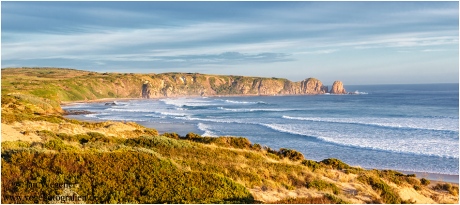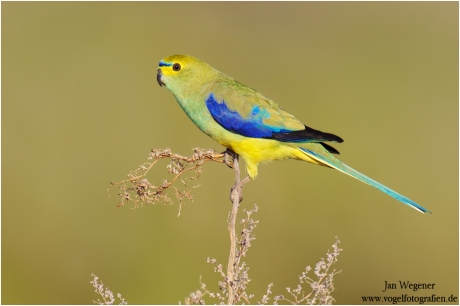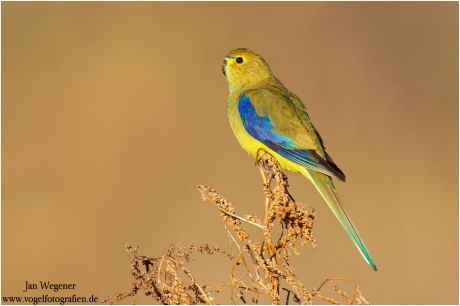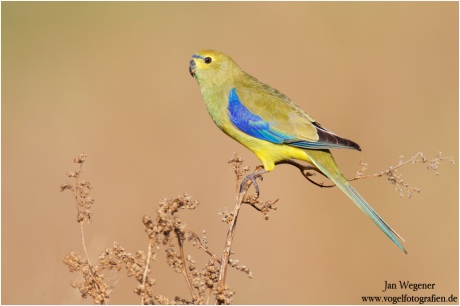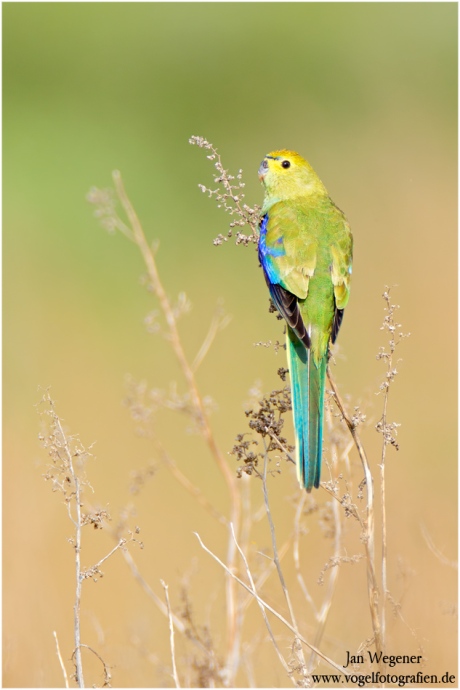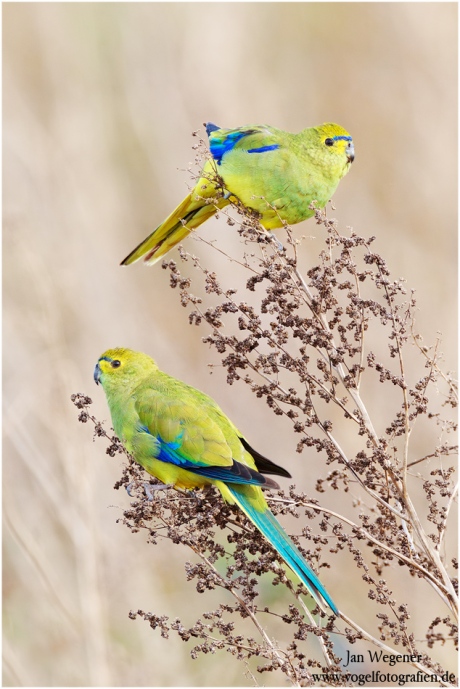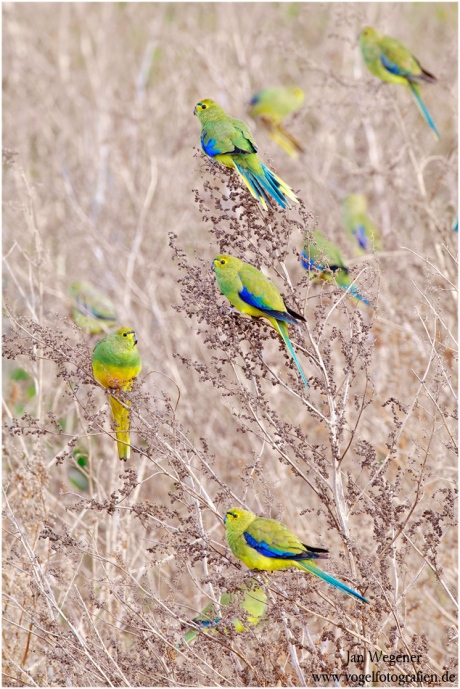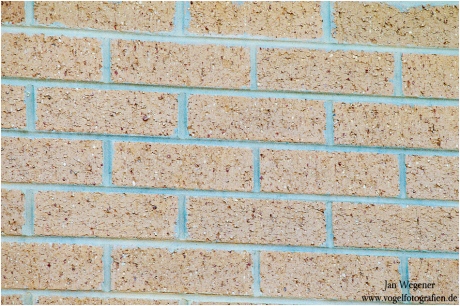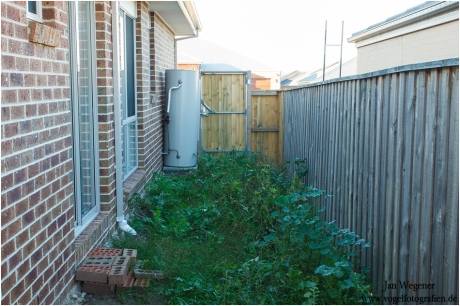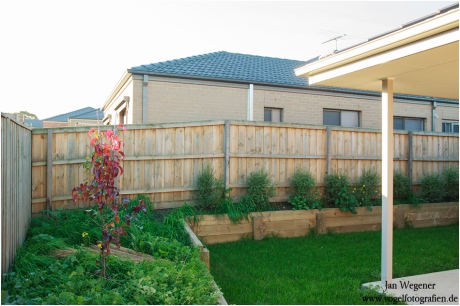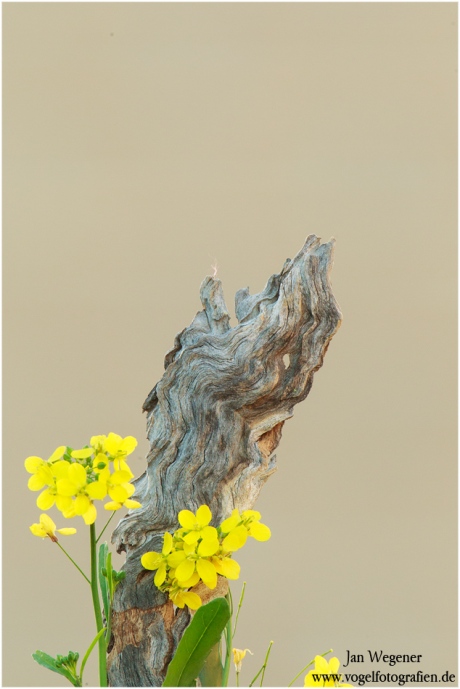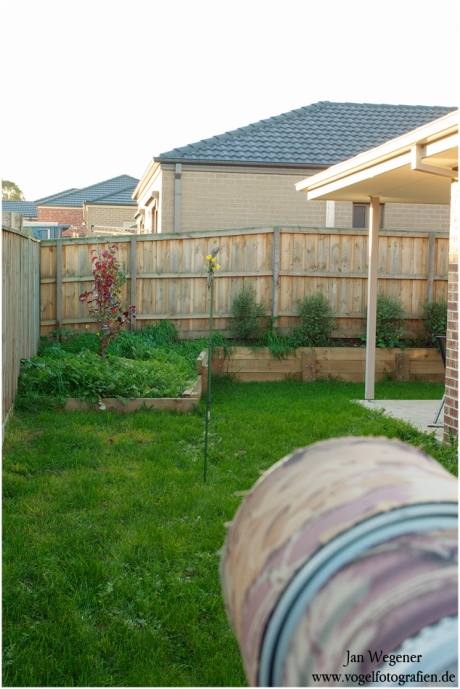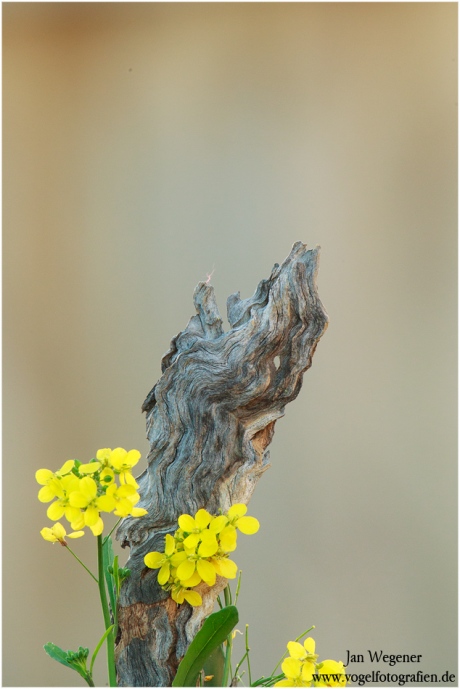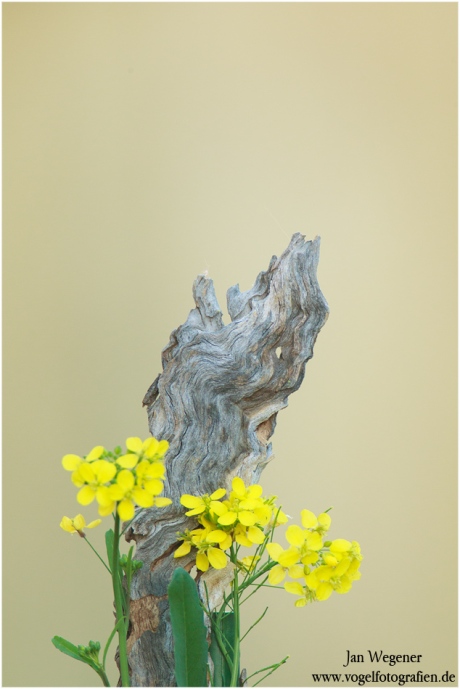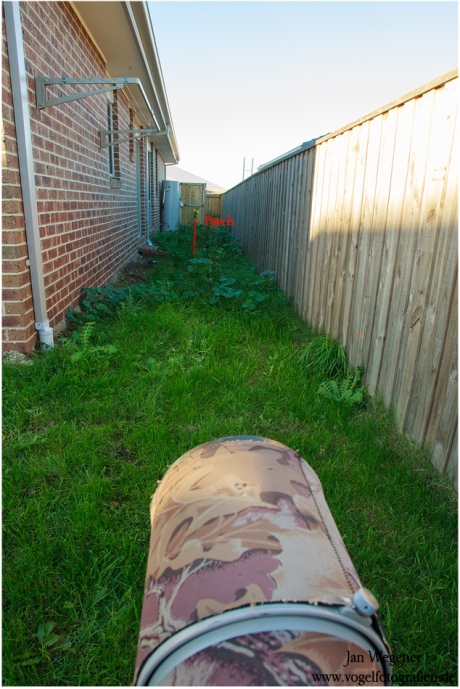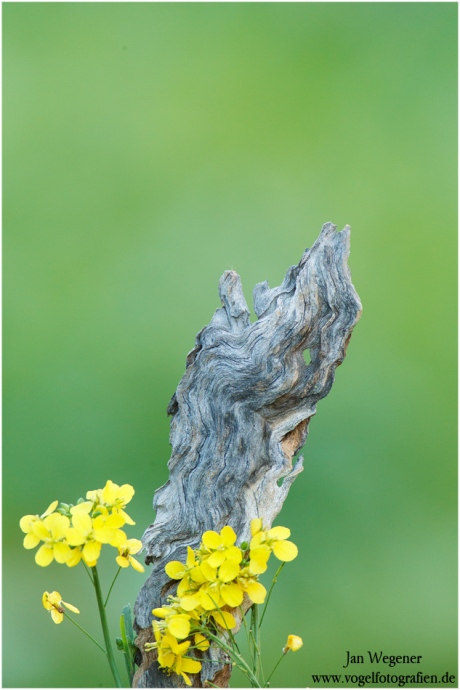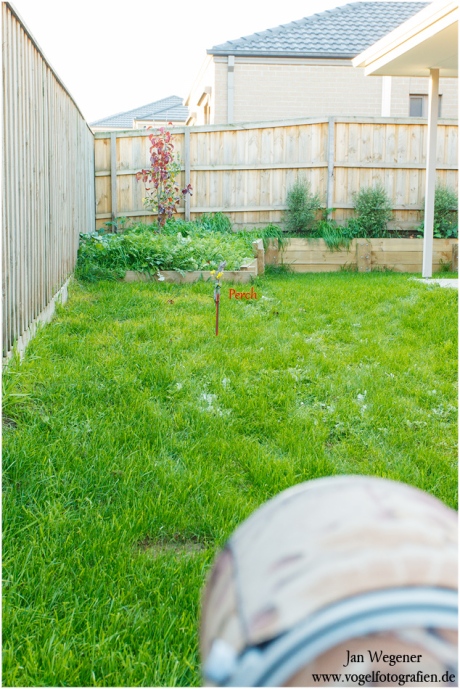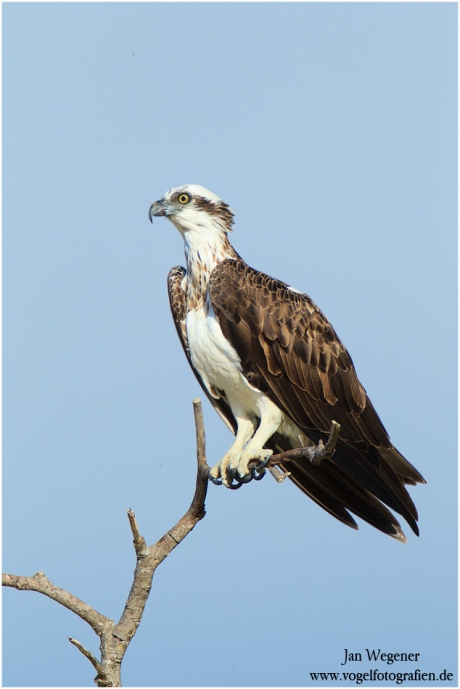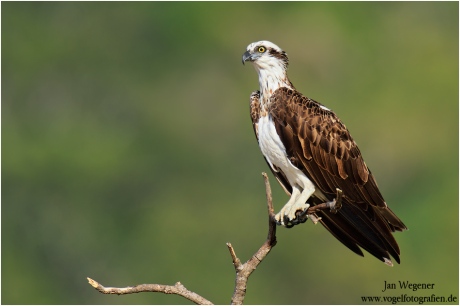Parrots near the Ocean!?
July 19, 2013
When you don’t live in Australia, this might sound pretty strange, but down here are actually quite a few species that like to be close to the coast. One of the most beautiful ones is the tiny Blue-winged Parrot (Neophema chrysostoma). Last week I had to chance to photograph the Blue-winged Parrots in different spots along the coastline south of Melbourne. The Blue-winged Parrots were always sitting on a plant called “Fat Hen” (Chenopodium album) and fed on the tiny seeds of the dry plants.
Below you can see a few images.
The whole gallery can be found HERE.
This first image shows a striking male.
After getting a few tighter portraits, I tried to go for group shots. It sounds easier than it is, because for a good result the Blue-winged Parrots have to sit on the same plant and in the same focal plane.
First I captured two birds feeding on top of a dry Fat Hen.
At the very end, I saw a few birds that had all landed on the same plant and after approaching very carefully I managed to take a few images of a group feeding. What a great feeling to get a shot you had envisioned for a while. To get enough depth of field, I stopped down to F13.
I decided to write this blog post for two reasons. Firstly I get ask almost on a daily basis how I managed to get such smooth and clean backgrounds in my image and secondly I see more and more people swapping out backgrounds in Photoshop. I am not a big fan of that trend and want to show how easy it is to obtain a nice background. I am a strong believer that an image should be created when pressing the shutter button, not in Photoshop. I am by no means against using Photoshop, nor am I opposed to cloning out twigs or distracting out of focus elements. However, I do not believe in swapping out whole backgrounds and thus creating a new scene, which was not present like that when you took the image. I think there needs to be a healthy medium between using the resources Photoshop offers us and photographers still taking images instead of creating them. After all, I am a bird photographer and like to be out in nature and work hard to get my target species. To me a great image is one that only needed minimal adjustments. That’s not always achievable, but we should certainly strive for that.
Now the big question. Can this brick wall be a lovely background?
And what about this terrible looking gate?
How about this ugly wooden fence?
Well, what can I say? Yes they can and quite easily in fact.
The following image of an empty perch with a few flowers attached to it was taken by using the brick wall as the background.
Who would’ve thought that your neighbours ugly brick wall can provided such a nice background. To answer a few more questions. This image was shot at F11, not at F4 as some might expect.
To show that I am not cheating. Here’s a making of.
Since we can see the wooden fence in this making of as well. Here’s another image using the fence as my background.
As you can see, the camera has a harder time to completely smoothen the vertical lines of the wood, but it’s still quite nice. Shot at F 11. If I was shooting at F5.6 for instance, it would be even smoother. If I adjusted my camera a bit more, I could have probably gotten a smoother result, but I just quickly took these shots for this blog post. When I am out and about, selecting the right background and positioning myself accordingly takes up a large part of my photography.
Back to the side of the house and the gate. How does this work out as a background?
You will likely have guessed it by now. It also provides a decent enough background. If you just saw this image, would you have thought that the background is a gate in a backyard!?
Here’s the making of
Lastly, maybe something green?
What did I use this time?
Easy answer, just the weeds in the garden bed 🙂
These are just quick examples, but it shows how easy it can be to obtain great backgrounds even in a tiny garden. You just have to be creative. The most important thing is to being able to image what could potentially be a good background and how you have to position yourself in relation to it, to get a great image. If I can find 4 decent background in such a small places, imagine how endless the opportunities are when you are out in the wild!
I hope this post gives you an incentive to try harder instead of opting for the Photoshop way.
Often it can be one or two steps to the left or right and you get a lovely smooth background instead of a sky or busy background.
Here are two examples I posted a few weeks ago. By literally walking 2m to the side, I was able to get a great looking background. Had I just stood there without thinking about the background, I would have ended up with a bland sky background.
Again, I know that there are situations where you can absolutely not change your position and just have to take an image with a non-ideal background and maybe you have to alter it a bit in Photoshop, that is totally fine, but should not be the norm.
The result after just moving slight to the side. Much better!
I hope this posts sheds some light on the backgrounds you see in my images and shows that these backgrounds can be obtained in camera and don’t have to be photoshopped.
